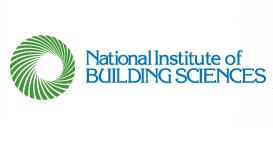New SAFETY Act Best Practices Guide to Commercial Building Security Now Available
WASHINGTON – (RealEstateRama) — A new web-based tool can help security professionals for commercial office buildings perform assessments based on the Best Practices for Anti-Terrorism Security (BPATS) for commercial office buildings. With best practices developed by the U.S. Department of Homeland Security (DHS) Science and Technology Directorate (S&T), in partnership with the National Institute of Building Sciences (Institute), building owners seeking protections under the Support Anti-Terrorism by Fostering Effective Technologies (SAFETY) Act can use the tool when developing their application packages.

“BPATS will be an important part of the SAFETY Act application process,” said William N. Bryan, Senior Official Performing the Duties of the Under Secretary for Science and Technology. “We want commercial building owners to feel confident in the steps they need to take in getting the protections they need to secure their facilities.”
An issue that arises for building owners seeking SAFETY Act protections is the need to re-submit applications due to gaps in the review for SAFETY Act eligibility. This new online format serves to eliminate such backtracking from the application process, outlining what a building needs to accomplish to become a candidate for Qualified Anti-Terrorism Technology (QATT) status.
The preferred users of this tool are trained security professionals whose credentials will be reviewed by the Institute before gaining access to the tool. They are then trained in using the checklist to evaluate various components of building security by SAFETY Act standards, including access control, risk awareness, physical security, IT security and more. The guide spans seven categories, 411 best practices and approximately 60 associated common practices.
“With the BPATS, our goal was to develop a comprehensive tool that security professionals could use to assess the anti-terrorism security of commercial office buildings,” said Bruce Davidson, Director of S&T’s Office of SAFETY Act Implementation (OSAI). “The output from their BPATS assessment should enable building leadership to take steps to enhance their building’s security and provide the foundation for a well-structured follow-on SAFETY Act application.”
OSAI and the Institute were able to validate the chosen best practices through pilot tests with six commercial buildings located in Washington D.C., Los Angeles, Chicago, New York and Denver. An understanding of how the common practices of those building owners corresponded with OSAI criteria helped refine the BPATS and the assessment process for consistency.
Commercial property owners and security professionals may request access to the BPATS tool here.
Businesses filing for SAFETY Act protections can receive Designation and Certification for their Qualified Anti-Terrorism Technology, which can cap their liability. The SAFETY Act was enacted in 2002 because of concerns that liability would hinder investment in the latest security technologies and programs following the attacks of September 11, 2001. OSAI engages with various public and private entities to ensure the SAFETY Act application process is consistent with their needs and promotes investment in the technologies the nation needs.
S&T reached a significant milestone earlier this year approving its 1,000th application for SAFETY Act protection.















